
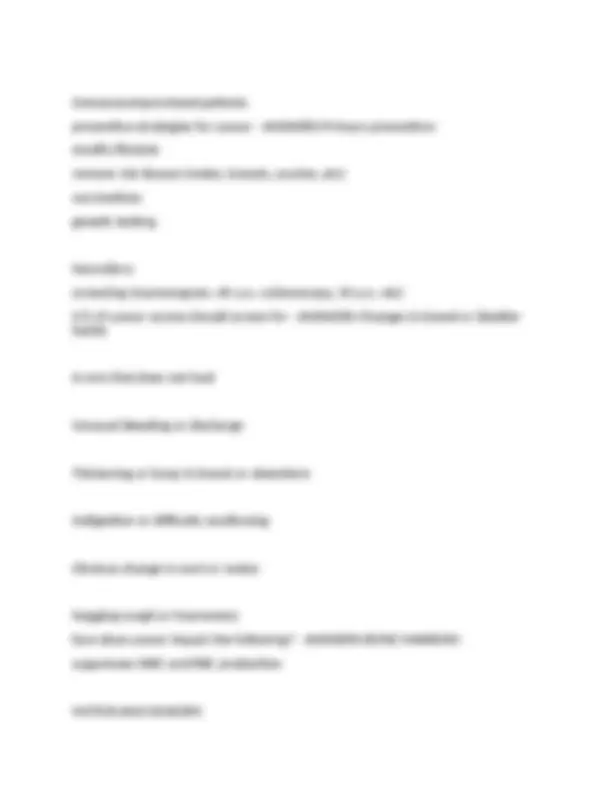
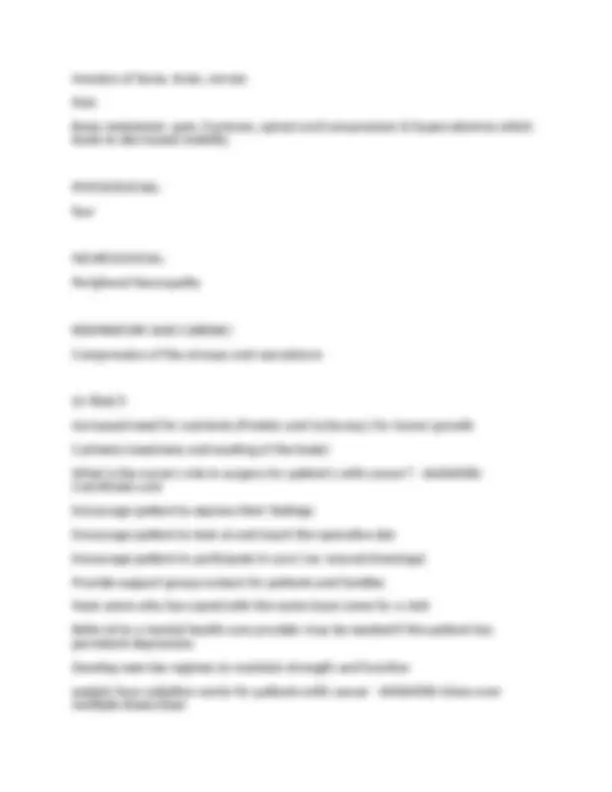
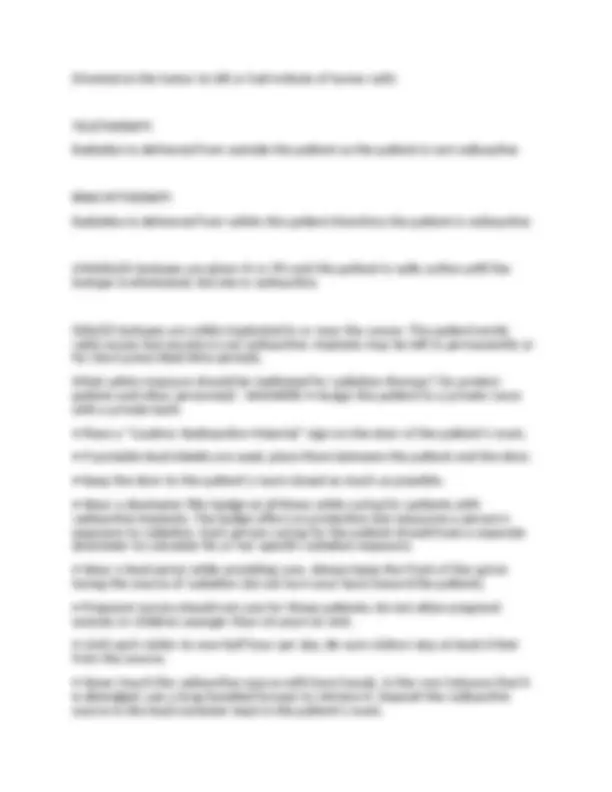
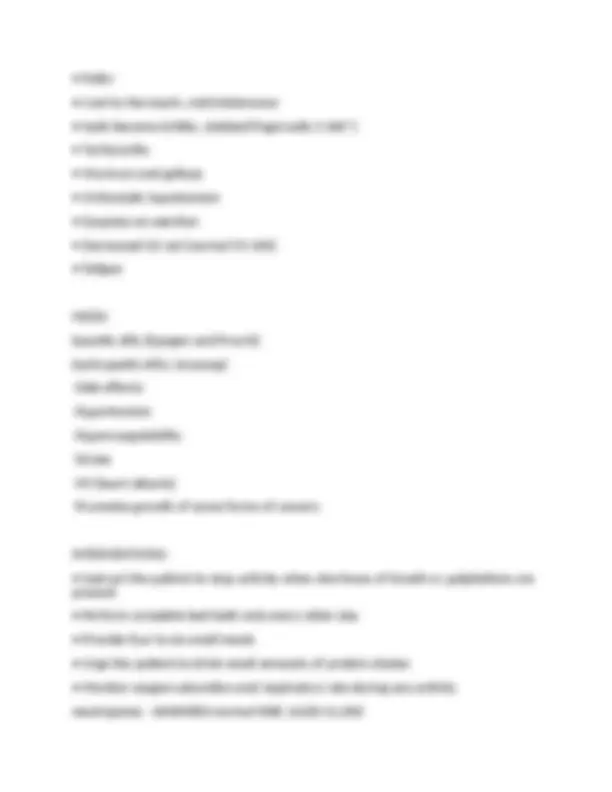
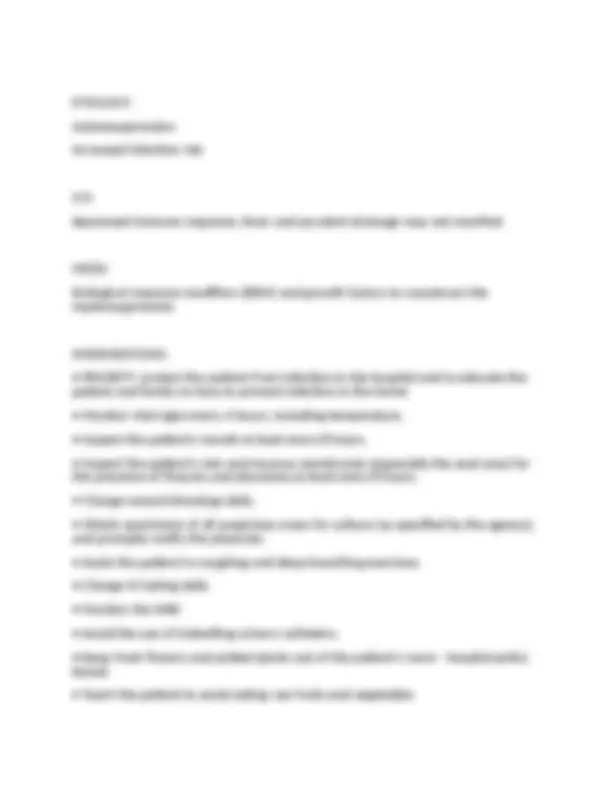
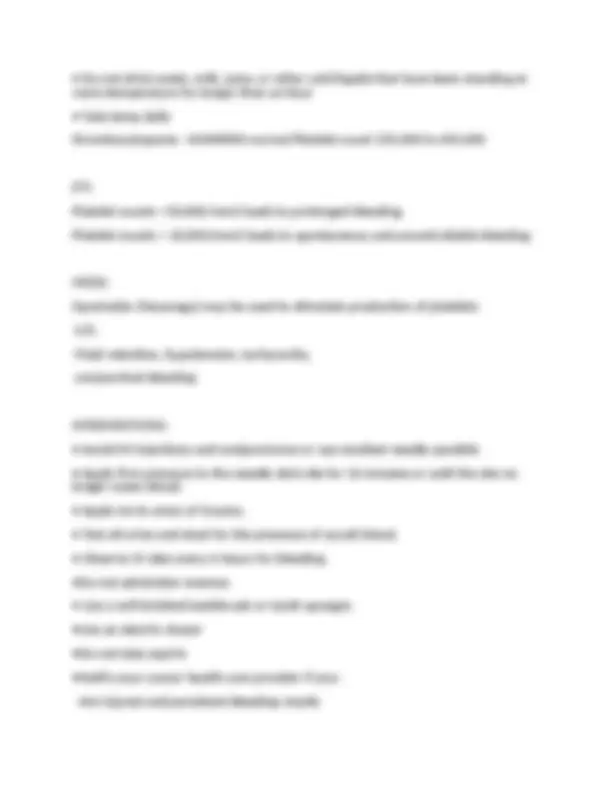
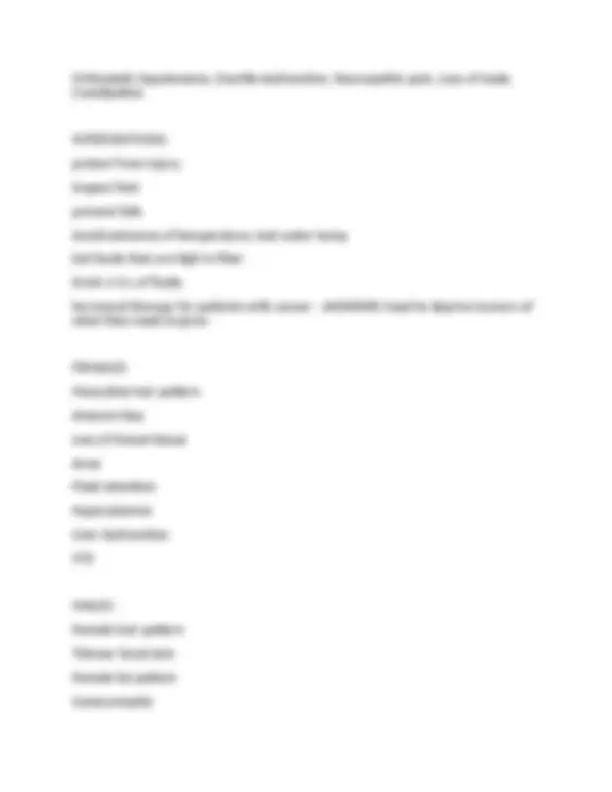
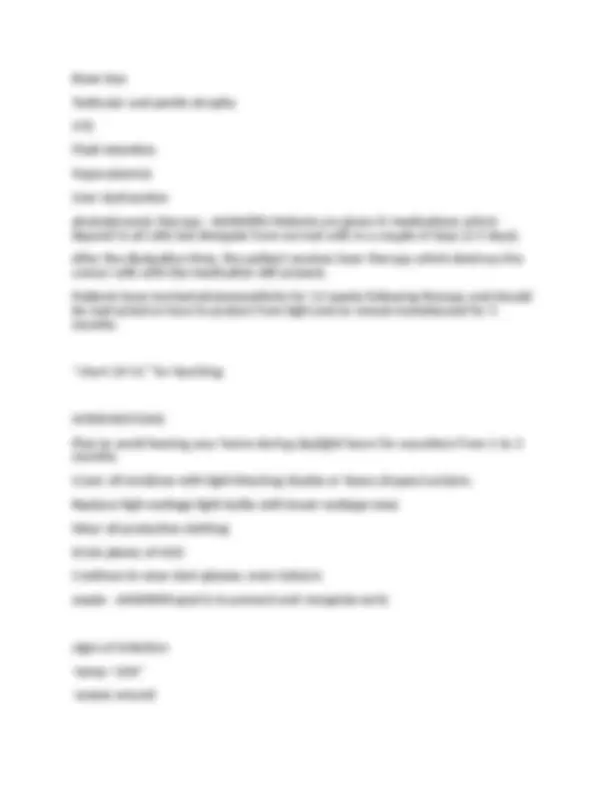
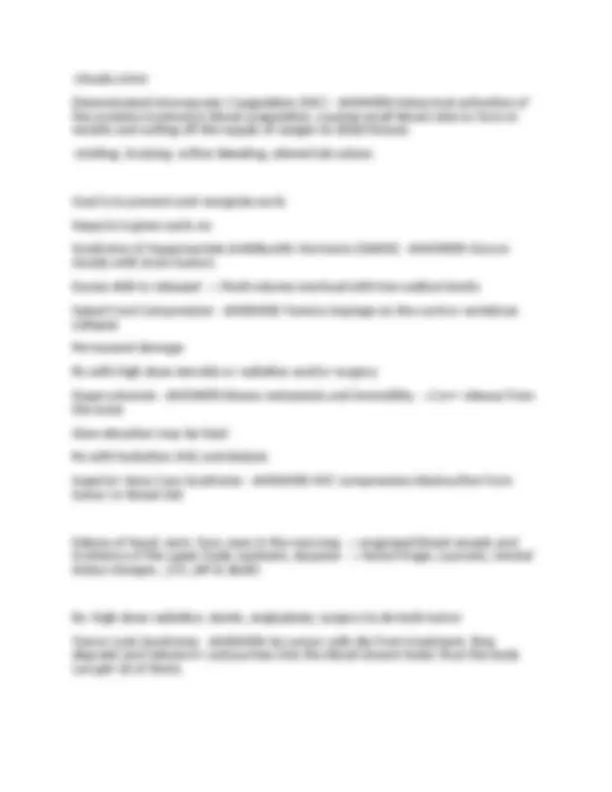
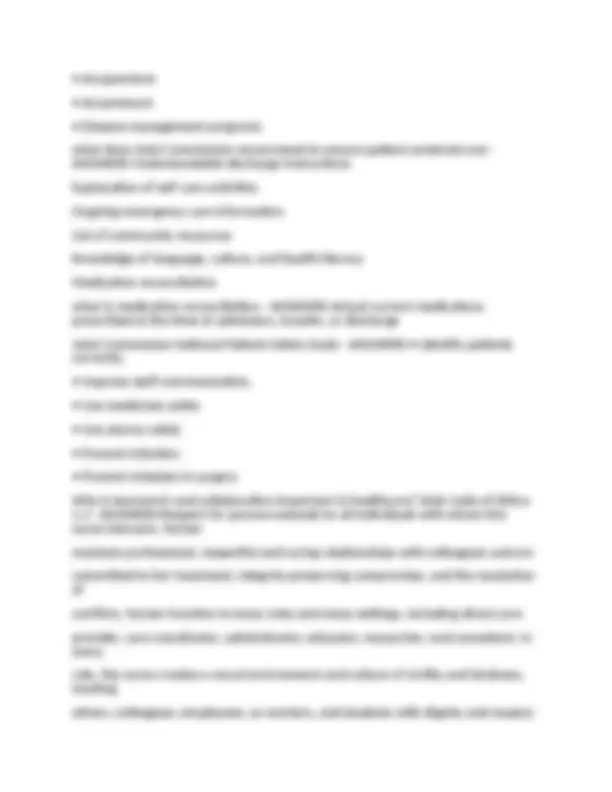
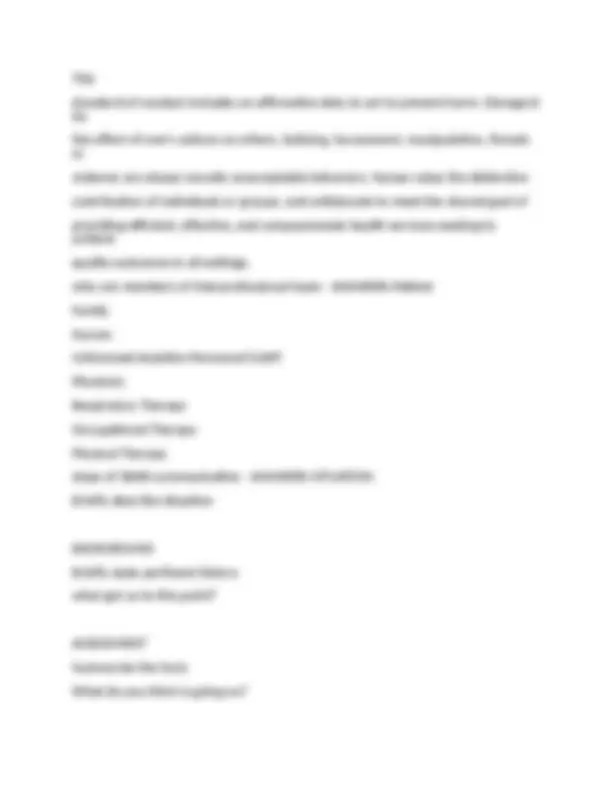
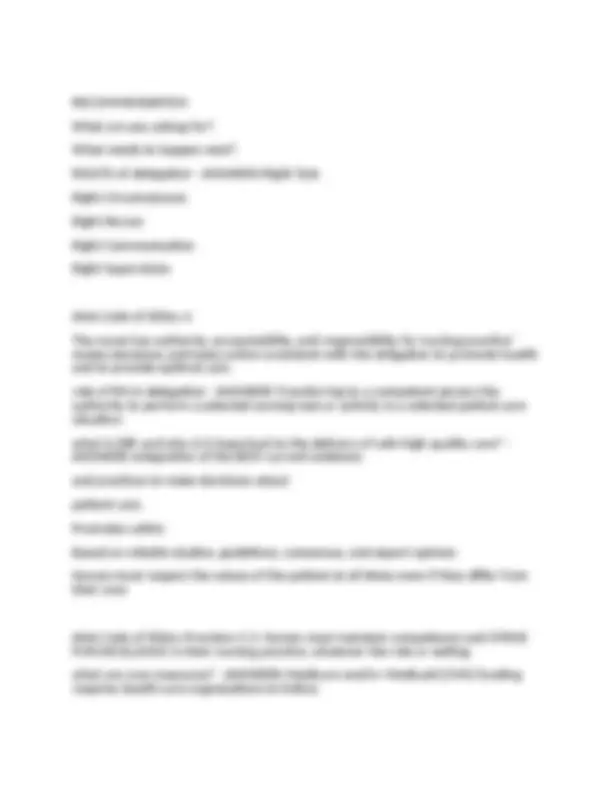
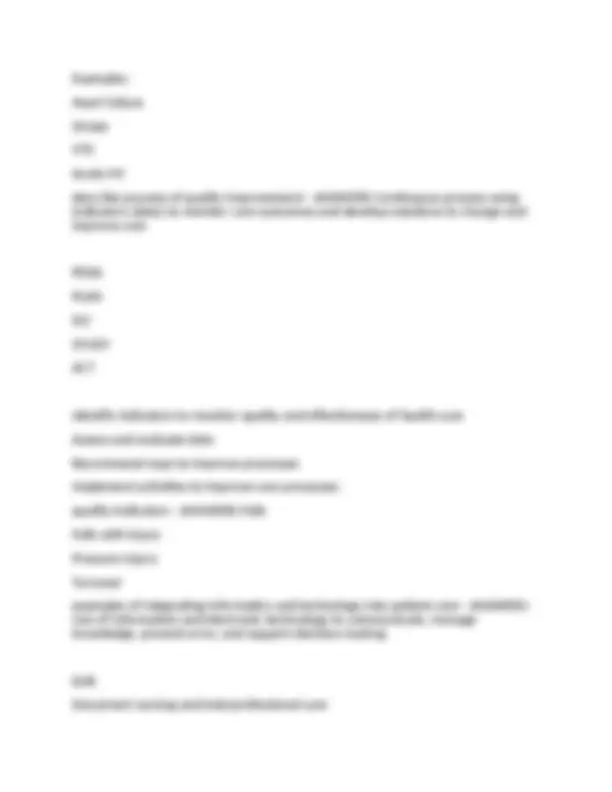
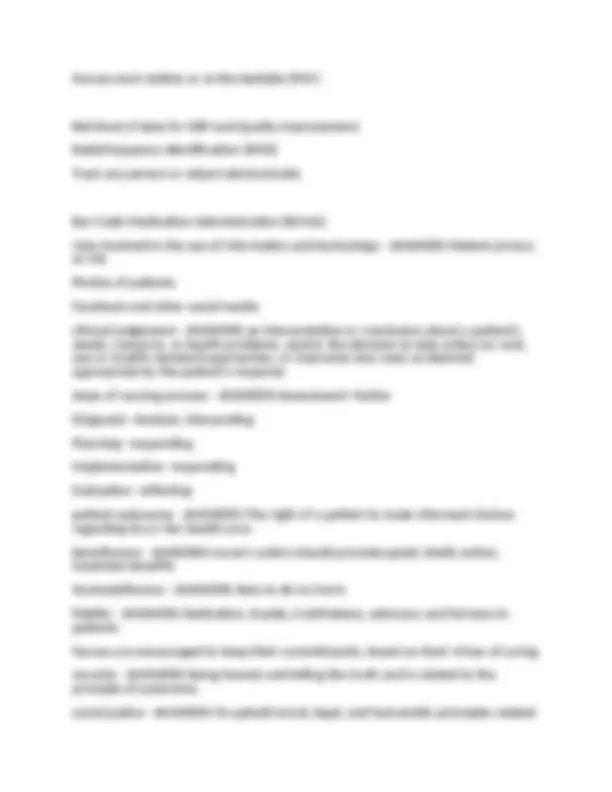
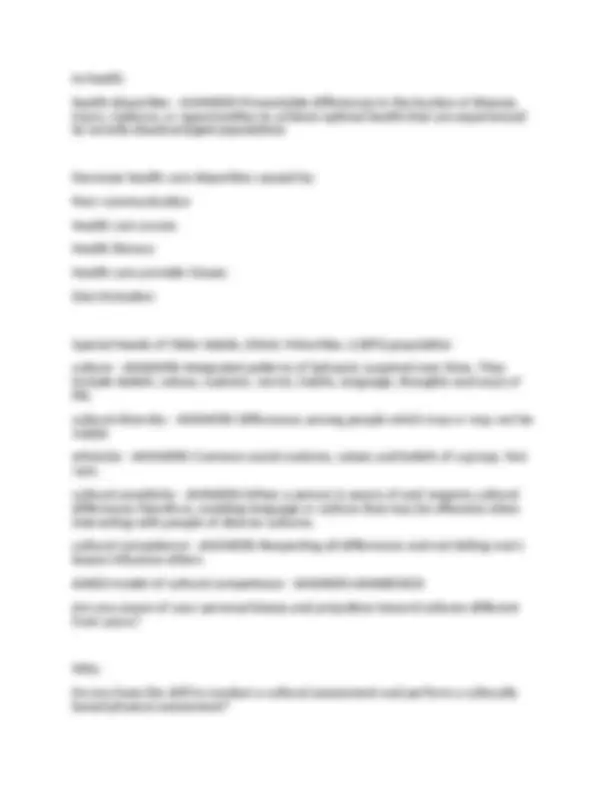
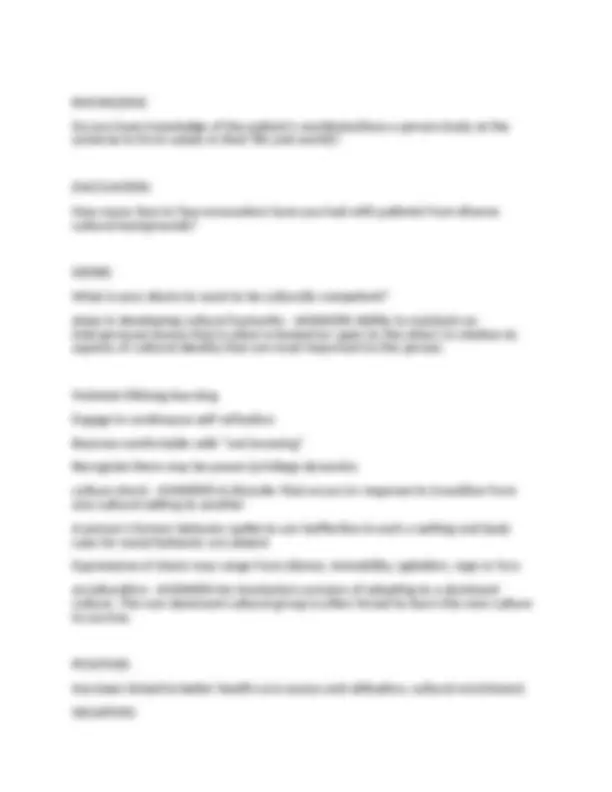
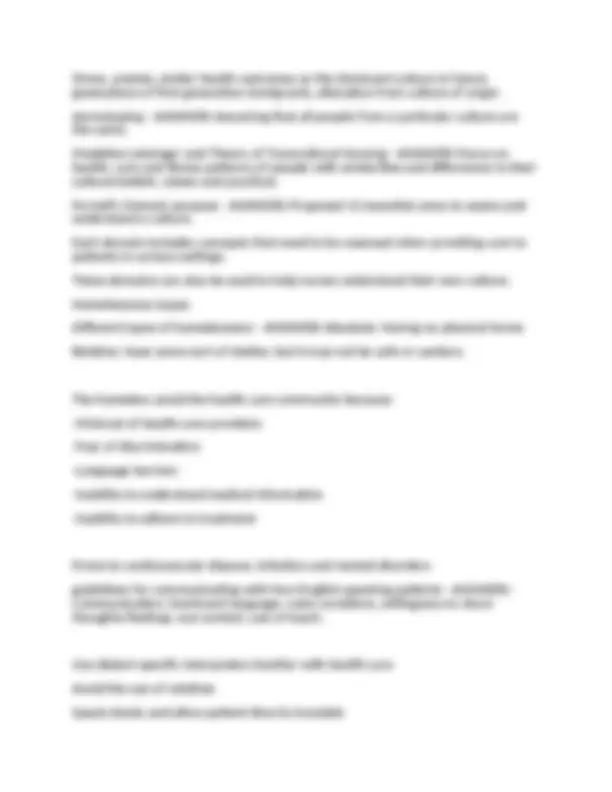
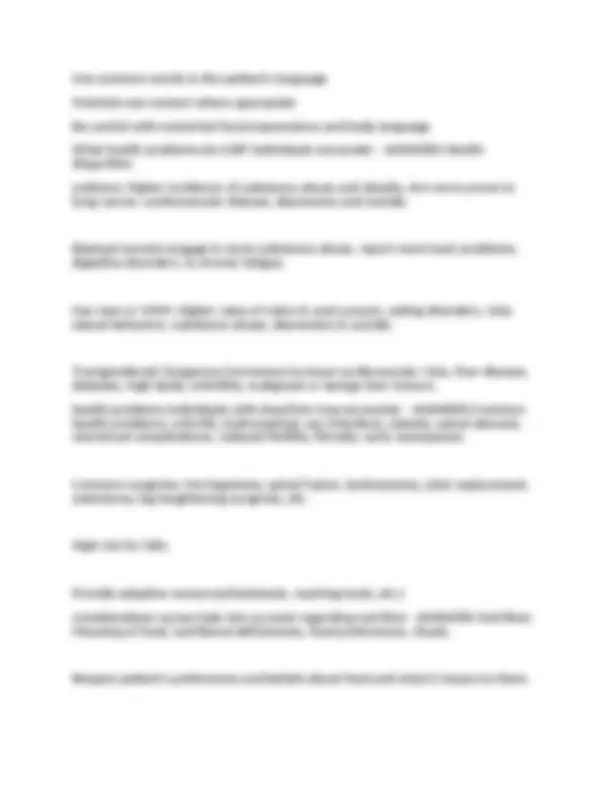
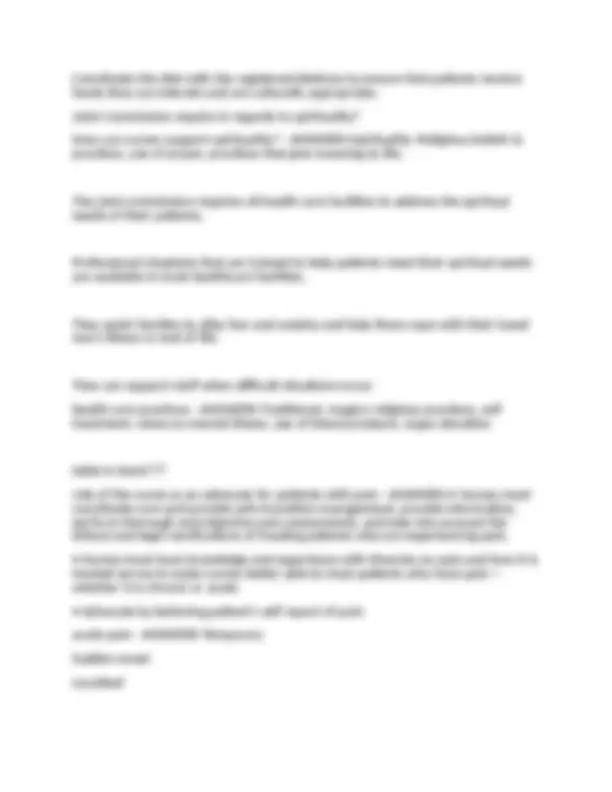
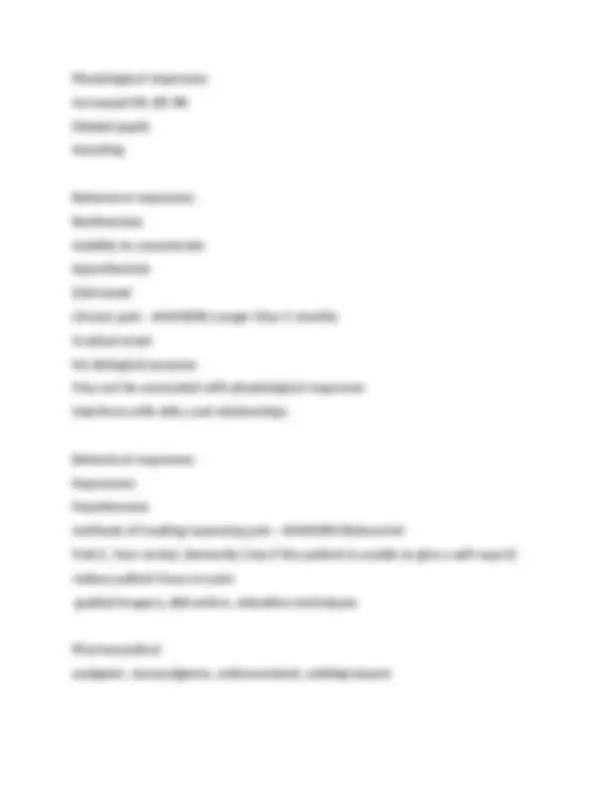
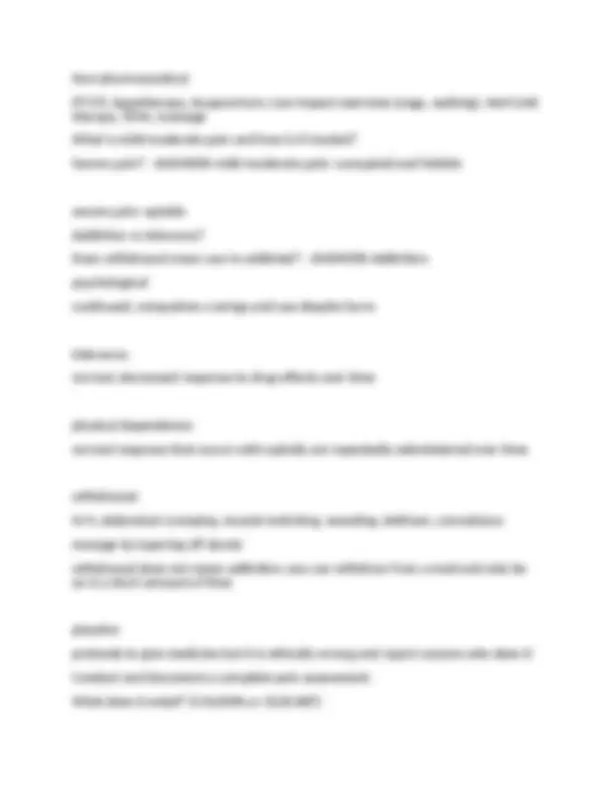
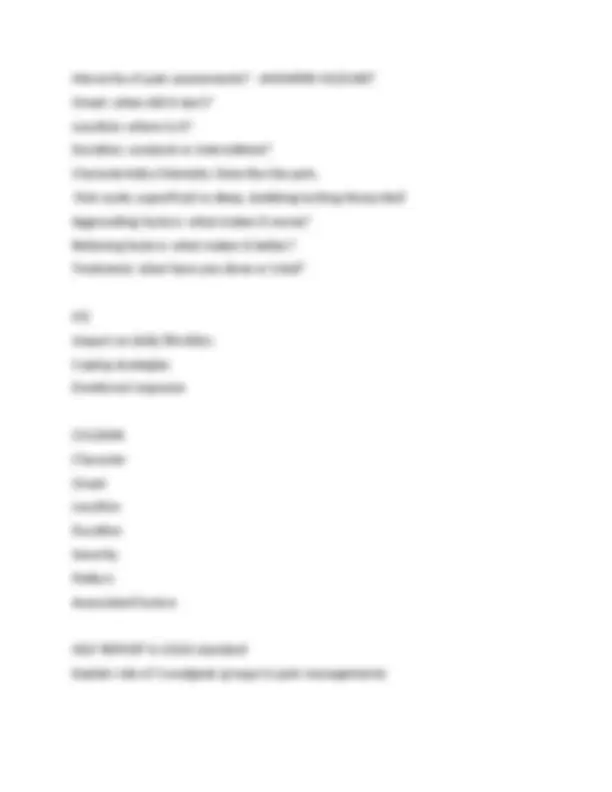
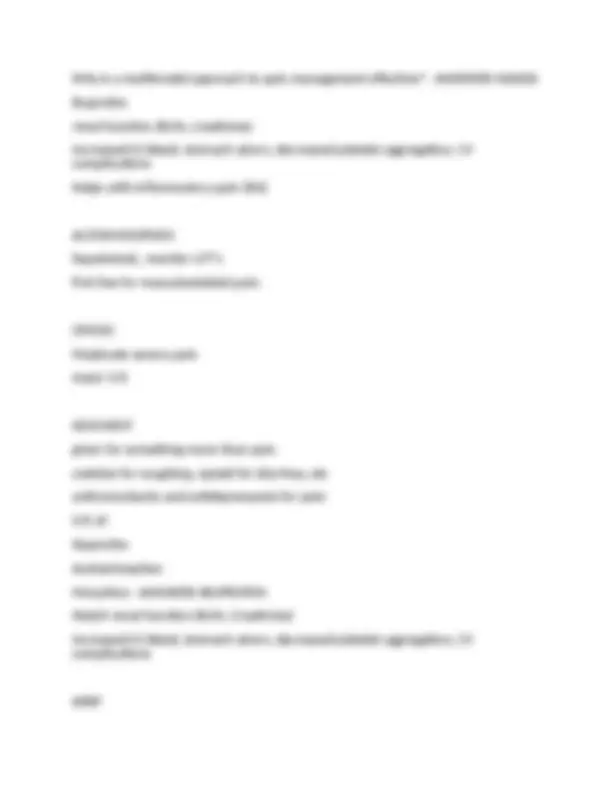
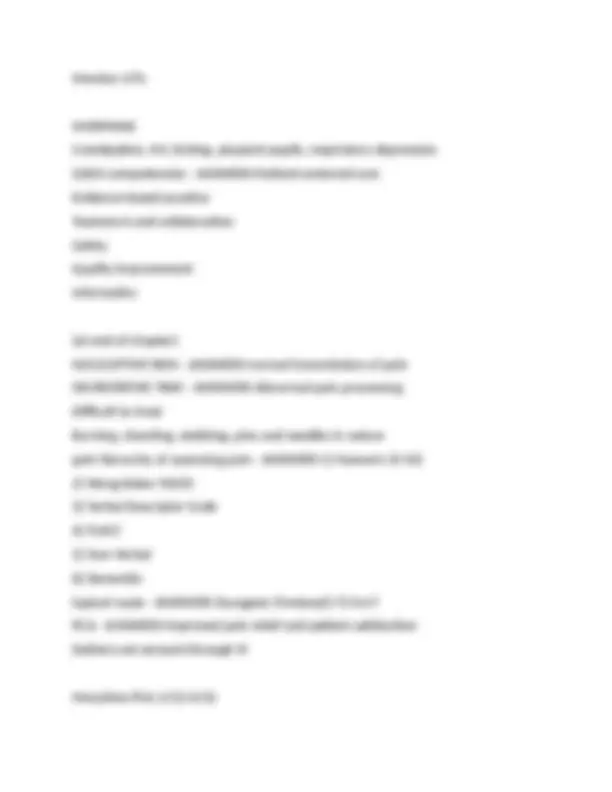



Study with the several resources on Docsity

Earn points by helping other students or get them with a premium plan


Prepare for your exams
Study with the several resources on Docsity

Earn points to download
Earn points by helping other students or get them with a premium plan
Community
Ask the community for help and clear up your study doubts
Discover the best universities in your country according to Docsity users
Free resources
Download our free guides on studying techniques, anxiety management strategies, and thesis advice from Docsity tutors
NU 300 EXAM 1: CANCER, CULTURE, PAIN, MED-SURG NURSING QUESTIONS WITH COMPLETE SOLUTIONS 2025 GRADED A+ PASS. NU 300 EXAM 1: CANCER, CULTURE, PAIN, MED-SURG NURSING QUESTIONS WITH COMPLETE SOLUTIONS 2025 GRADED A+ PASS.
Typology: Exams
1 / 33

This page cannot be seen from the preview
Don't miss anything!


























what is the stimulus for the conversion of normal cells to malignant cells? - ANSWERS-Carcinogenesis, also called oncogenesis or tumorigenesis, is the formation of a cancer, whereby normal cells are transformed into cancer cells. The process is characterized by changes at the cellular, genetic, and epigenetic levels and abnormal cell division. Oncogenes start the reproduction process, suppressor genes halt cellular reproduction benign vs malignant cells - ANSWERS-BENIGN: does not spread controlled growth rate smaller cell nucleus non-cancerous MALIGNANT: migrates rapid and uncontrolled growth chromosomal abnormalities grading system for cellular characteristics - ANSWERS-Grading addresses how malignant a tumor is. The more aggressive and less similarity to the tissue of origin, the higher the grade. The higher the grade, the poorer the outcome Gx: grade not determined G1: well differentiated low grade of malignant change malignant and strong growing
more moderately differentiated G3: poorly differentiated few normal characteristics G4: no normal characteristics finding tissue of origin is nearly impossible TNM staging for cancer - ANSWERS-Primary tumor (T) Tx, To, Tis, T 1- Regional Lymph Nodes Nx, No, N 1- Distant Metastasis Mx, Mo, M 1 etiological factors of cancer Who are the people at the highest risk for cancer? - ANSWERS-Exposure to Carcinogens: Chemical Physical Viral Dietary Genetic Predisposition
Invasion of bone, brain, nerves Pain Bone metastasis- pain, fractures, spinal cord compression & hypercalcemia which leads to decreased mobility PSYCHOSOCIAL: fear NEUROLOGICAL: Peripheral Neuropathy RESPIRATORY AND CARDIAC: Compression of the airways and vasculature GI TRACT: Increased need for nutrients (Protein and Carbs esp.) for tumor growth Cachexia (weakness and wasting of the body) What is the nurse's role in surgery for patient's with cancer? - ANSWERS- Coordinate care Encourage patient to express their feelings Encourage patient to look at and touch the operative site Encourage patient to participate in care ( ex: wound dressings) Provide support group contact for patients and families Have some who has coped with the same issue come for a visit Referral to a mental health care provider may be needed if the patient has persistent depression Develop exercise regimes to maintain strength and function explain how radiation works for patients with cancer - ANSWERS-Given over multiple doses/days
Directed at the tumor to kill or halt mitosis of tumor cells TELETHERAPY: Radiation is delivered from outside the patient so the patient is not radioactive BRACHYTHERAPY: Radiation is delivered from within the patient therefore the patient is radioactive UNSEALED isotopes are given IV or PO and the patient is radio active until the isotope is eliminated. Excreta is radioactive. SEALED isotopes are solids implanted in or near the cancer. The patient emits radio waves but excreta is not radioactive. Implants may be left in permanently or for short prescribed time periods. What safety measure should be instituted for radiation therapy? (to protect patient and other personnel) - ANSWERS-• Assign the patient to a private room with a private bath.
be given by the RN with extra training/certification. All RNs monitor and provide care for patients receiving chemotherapy what is the nurse's role who is caring for the patient receiving chemotherapy? - ANSWERS-The goal is to protect the patient from life threatening side effects and manage the distressing side effects. For some the side effects are so miserable, patients opt to stop taking the chemotherapy. what safety measures should be employed by nurses giving PO chemotherapeutic agents? - ANSWERS-Have the same PPE requirements as IV agents how should bodily fluids from patients receiving chemotherapy be handled? - ANSWERS-Anyone preparing, giving, or handling chemotherapy drugs or handling excreta from patients receiving chemotherapy should wear PPE -double gloves or chemo gloves, gown, mask, eye protection describe advantages and disadvantages of oral chemotherapy - ANSWERS- ADVANTAGES: More convenient, less toxic to patients and personnel DISADVANTAGES: Control of treatment is lost (Protection, Compliance, Correct administration, Recognition and management of side effects) Cannot be crushed, split, broken or chewed Extravasation of Chemotherapy - ANSWERS-Major complication of IV Chemotherapy with vesicants. When the IV infiltrates, the drug is given into soft tissue and due to the vesicant nature, the tissue is destroyed. If not prevented: Heat or cold may be applied dependent on the particular agent used. Antidotes or chemoprotective agents may be injected into the site. Surgery may be needed. anemia - ANSWERS-S/S:
-Have excessive menstrual bleeding -See blood in your urine or bowel movement •Take a stool softener chemotherapy induced nausea and vomiting (CINV) - ANSWERS-ETI: Begins with administration of the agent and may last up to 7 days following RX Anxiety may cause CINV Preventative meds should be given at regularly scheduled times before the CINV starts (RN responsibility to make sure these meds are given BEFORE CINV starts) MEDS: antiemetics INTERVENTIONS: Assess for dehydration (tachycardia), vomiting, and electrolyte imbalances Complementary measures to reduce CINV: Music, Progressive muscle relaxation, Guided imagery, Acupressure, Distraction, Concord grape juice before meals mucositis - ANSWERS-INTERVENTIONS
Orthostatic hypotension, Erectile dysfunction, Neuropathic pain, Loss of taste, Constipation INTERVENTIONS: protect from injury inspect feet prevent falls Avoid extremes of temperature, test water temp Eat foods that are high in fiber Drink 2-3 L of fluids hormonal therapy for patients with cancer - ANSWERS-Used to deprive tumors of what they need to grow FEMALES: Masculine hair pattern Amenorrhea Loss of breast tissue Acne Fluid retention Hypocalcemia Liver dysfunction VTE MALES: Female hair pattern Thinner facial skin Female fat pattern Gynecomastia
Bone loss Testicular and penile atrophy VTE Fluid retention Hypocalcemia Liver dysfunction photodynamic therapy - ANSWERS-Patients are given IV medications which deposit in all cells but dissipate from normal cells in a couple of days (2-3 days). After the dissipation time, the patient receives laser therapy which destroys the cancer cells with the medication still present. Patients have marked photosensitivity for 12 weeks following therapy and should be instructed on how to protect from light and to remain homebound for 3 months chart 24-11 for teaching INTERVENTIONS Plan to avoid leaving your home during daylight hours for anywhere from 1 to 3 months. Cover all windows with light-blocking shades or heavy drapes/curtains. Replace high-wattage light bulbs with lower-wattage ones Wear all protective clothing Drink plenty of H2O Continue to wear dark glasses, even indoors sepsis - ANSWERS-goal is to prevent and recognize early signs of infection -temp >104* -assess wound
Purines deposit uric acid crystals which deposit in the kidneys injuring the kidneys. Patients develop hyperkalemia Rx - HYDRATION, HYDRATION, HYDRATION 3-5L the day before, on, and 3 days after treatment Some fluids should be alkaline Prevent NV Polystyrene sulfonate, glucose & insulin for K+ Allopurinol for Uric Acid adult health nursing scope of adult health nursing - ANSWERS-18 to >100 years of age Majority >65 years of age Patient (Client)/Family Manage ACTUAL or POTENTIAL health problems affecting the individual, significant other, and community health concepts - ANSWERS-ACID-BASE BALANCE CELLULAR REGULATION CLOTTING COGNITION COMFORT ELIMINATION FLUID AND ELECTROLYTE BALANCE GAS EXCHANGE GLUCOSE REGULATION IMMUNITY MOBILITY
HIGHEST priority - ANSWERS-safety QSEN - ANSWERS-Quality and Safety Education for Nurses safety and excellent care for our patients patient-centered care some examples - ANSWERS-Caring, Compassion, Holism Respect for diverse preferences and needs Managing Chronic Health Issues and Acute Pain Individualized coordinated care ANA Code of Ethics 1 The nurse practices with compassion and respect for the inherent dignity, worth, and personal attributes of every person, without prejudice.
This standard of conduct includes an affirmative duty to act to prevent harm. Disregard for the effect of one's actions on others, bullying, harassment, manipulation, threats or violence are always morally unacceptable behaviors. Nurses value the distinctive contribution of individuals or groups, and collaborate to meet the shared goal of providing efficient, effective, and compassionate health services seeking to achieve quality outcomes in all settings. who are members of interprofessional team - ANSWERS-Patient Family Nurses Unlicensed Assistive Personnel (UAP) Physician Respiratory Therapy Occupational Therapy Physical Therapy steps of SBAR communication - ANSWERS-SITUATION Briefly describe situation BACKGROUND Briefly state pertinent history what got us to this point? ASSESSMENT Summarize the facts What do you think is going on?
What are you asking for? What needs to happen next? RIGHTS of delegation - ANSWERS-Right Task Right Circumstances Right Person Right Communication Right Supervision ANA Code of Ethics 4 The nurse has authority, accountability, and responsibility for nursing practice' makes decisions and takes action consistent with the obligation to promote health and to provide optimal care. role of RN in delegation - ANSWERS-Transferring to a competent person the authority to perform a selected nursing task or activity in a selected patient care situation what is EBP and why is it important to the delivery of safe-high quality care? - ANSWERS-Integration of the BEST current evidence and practices to make decisions about patient care. Promotes safety Based on reliable studies, guidelines, consensus, and expert opinion Nurses must respect the values of the patient at all times even if they differ from their own ANA Code of Ethics Provision 5.5: Nurses must maintain competence and STRIVE FOR EXCELLENCE in their nursing practice, whatever the role or setting what are core measures? - ANSWERS-Medicare and/or Medicaid (CMS) funding requires health care organizations to follow